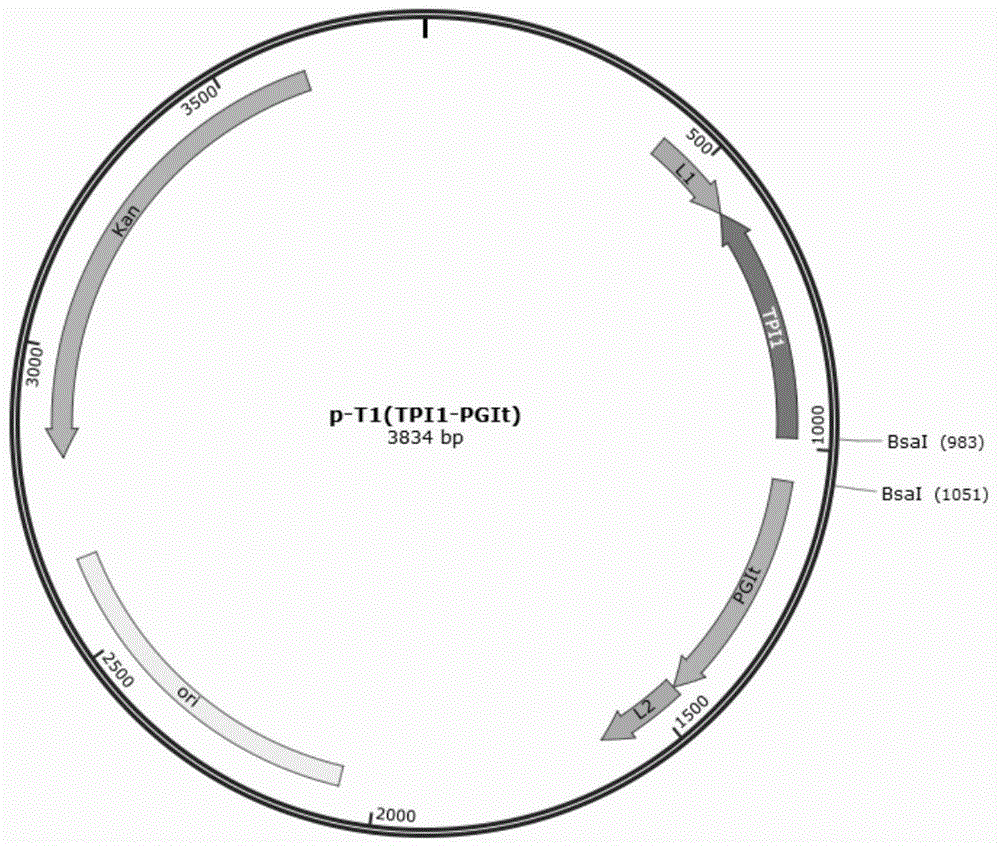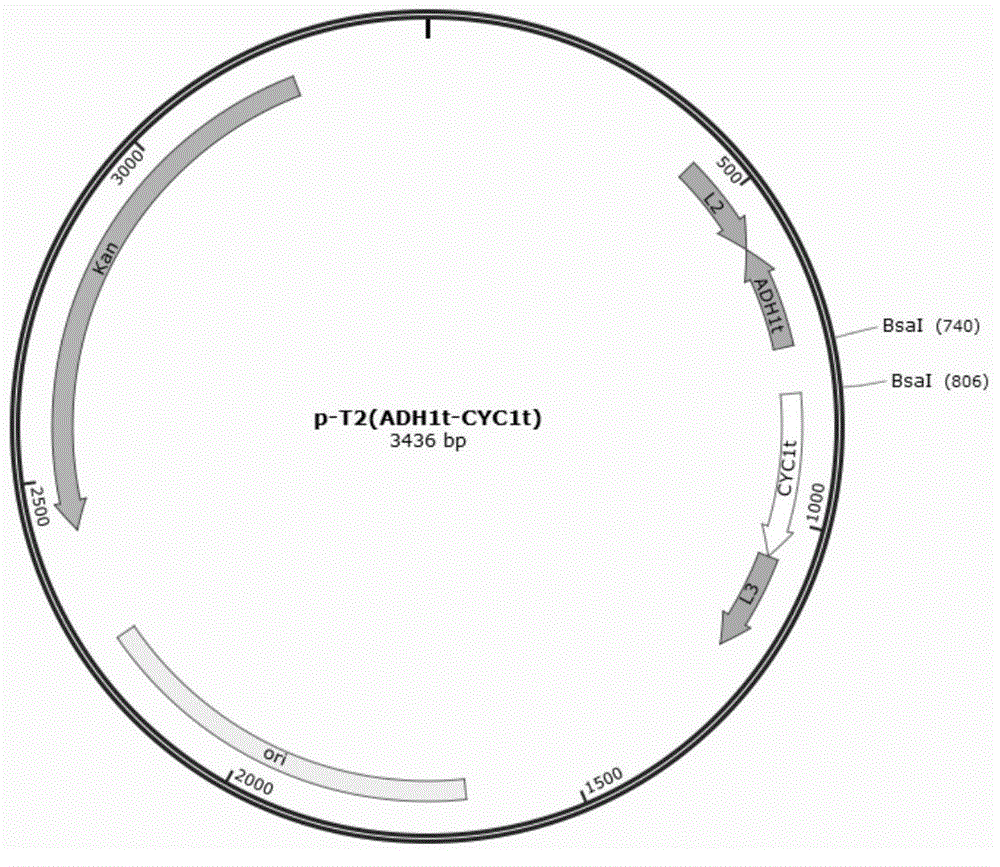Method for simultaneously cloning multiple exogenous genes to microbial genome
A technology of exogenous genes and microorganisms, applied in the field of genetic engineering
- Summary
- Abstract
- Description
- Claims
- Application Information
AI Technical Summary
Problems solved by technology
Method used
Image
Examples
Embodiment 1
[0049] The synthesis of embodiment 1 two-way terminator, two-way promoter
[0050] (1) Synthesis of bidirectional terminator
[0051] Bidirectional terminator T1 (TPI1-PGIt), bidirectional terminator T2 (ADH1t-CYC1t), bidirectional terminator T3 (tFBA1 ) shown in SEQ ID NO:1, SEQ ID NO:2, SEQ ID NO:3 in the synthetic sequence list -tPDC1), consisting of 1180, 776, and 963 bases, respectively. Wherein, the bidirectional terminator T1 (TPI1-PGIt) of the first bidirectional gene expression vector, as shown in the sequence table SEQ ID NO: 1, from the 1031st to 1180th nucleotides at the 5' end, and the second bidirectional gene The bidirectional terminator T2 (ADH1t-CYC1t) of the expression vector, as shown in the sequence table SEQ ID NO: 2, the nucleotides from the 1st to the 150th position of the 5' end are the homology arm L2. The bidirectional terminator T2 (ADH1t-CYC1t) of the second bidirectional gene expression vector, as shown in the sequence table SEQ ID NO: 2, from nu...
Embodiment 2
[0054] Embodiment 2 constructs p-T1 (TPI1-PGIt) plasmid, p-T2 (ADH1t-CYC1t) plasmid, p-T3 (tFBA1-tPDC1) plasmid, PMD-P1 (TDH3-ADH1) plasmid, PMD-P2 (PGK1- TEF2) plasmid
[0055] The bidirectional terminator T1 (TPI1-PGIt), bidirectional terminator T2 (ADH1t-CYC1t), and bidirectional terminator T3 (tFBA1-tPDC1) were connected to the pUC57-Kan plasmid (such as figure 1 shown), the recombinant expression vector p-T1 (TPI1-PGIt) was obtained (such as figure 2 shown), p-T2 (ADH1t-CYC1t) (such as image 3 shown), p-T3(tFBA1-tPDC1) (such as Figure 4 shown). Connect the bidirectional promoter P1 (TDH3-ADH1), bidirectional promoter P2 (PGK1-TEF2) to the PMD18-T plasmid (such as Figure 5 Shown) to obtain the recombinant expression vector PMD-P1 (TDH3-ADH1) (such as Image 6 shown), PMD-P2 (PGK1-TEF2) (such as Figure 7 shown).
Embodiment 3
[0056] Synthesis of embodiment 3 target gene
[0057] 4CL, CHS, CHI, FSII, CHS, CHI, FSII, PAL, C4H genes, the above-mentioned genes are all from the Compositae plant Erigeron breviscapus (Vant.) Hand-Mazz, which has optimized gene sequences with Saccharomyces cerevisiae preferred codons, respectively 1624, 1199, 718, 1562, 2136 , 2136 bases.
PUM
 Login to View More
Login to View More Abstract
Description
Claims
Application Information
 Login to View More
Login to View More - R&D
- Intellectual Property
- Life Sciences
- Materials
- Tech Scout
- Unparalleled Data Quality
- Higher Quality Content
- 60% Fewer Hallucinations
Browse by: Latest US Patents, China's latest patents, Technical Efficacy Thesaurus, Application Domain, Technology Topic, Popular Technical Reports.
© 2025 PatSnap. All rights reserved.Legal|Privacy policy|Modern Slavery Act Transparency Statement|Sitemap|About US| Contact US: help@patsnap.com



